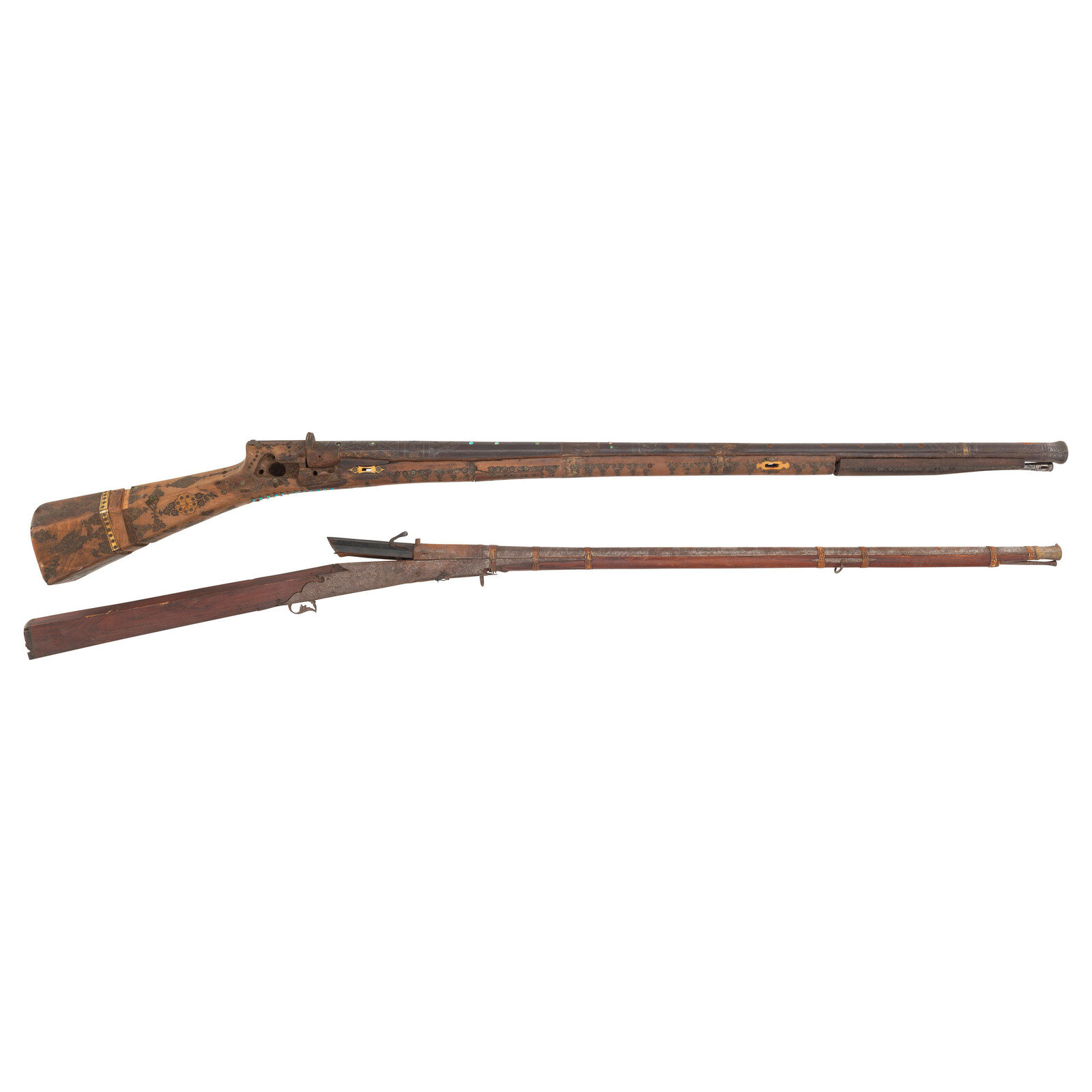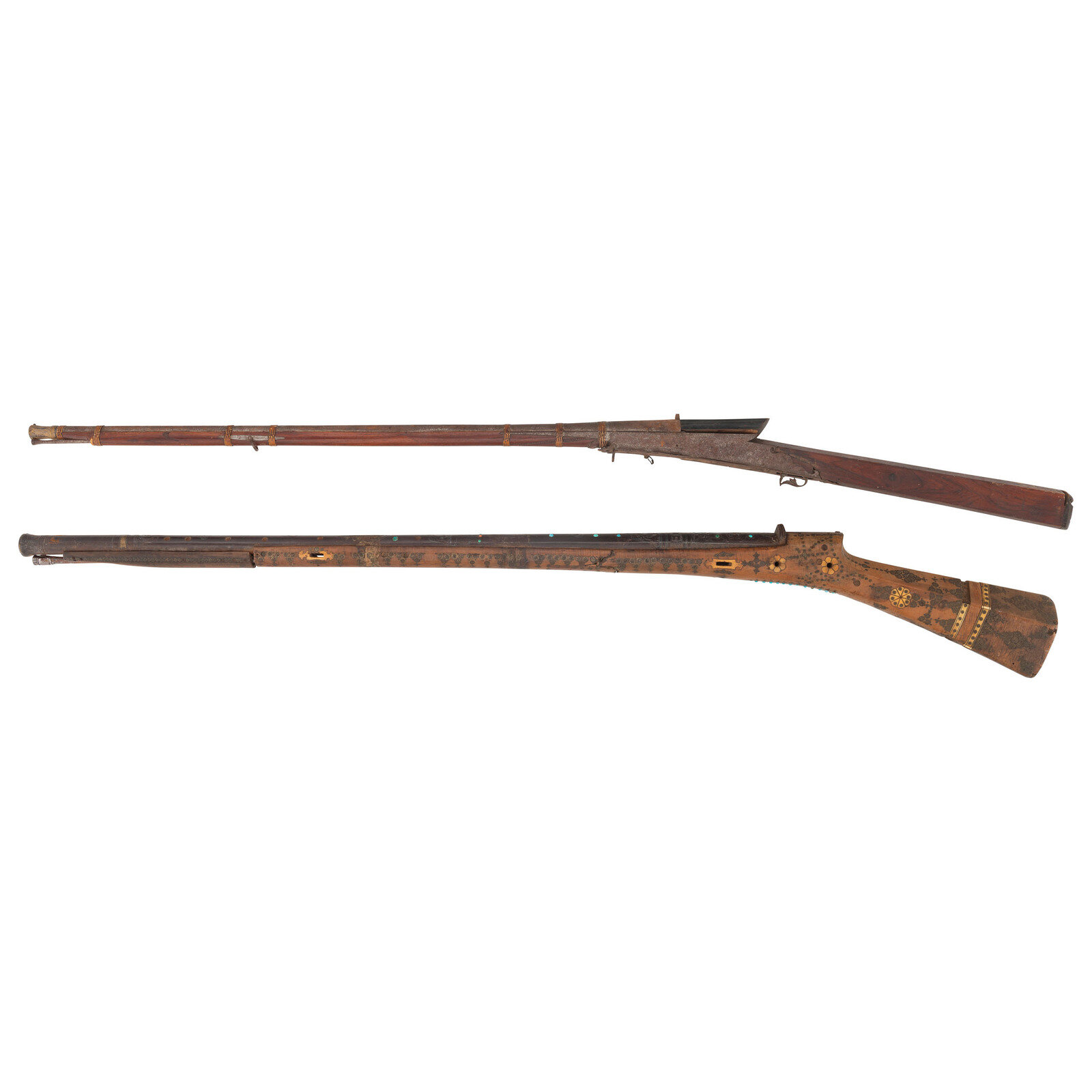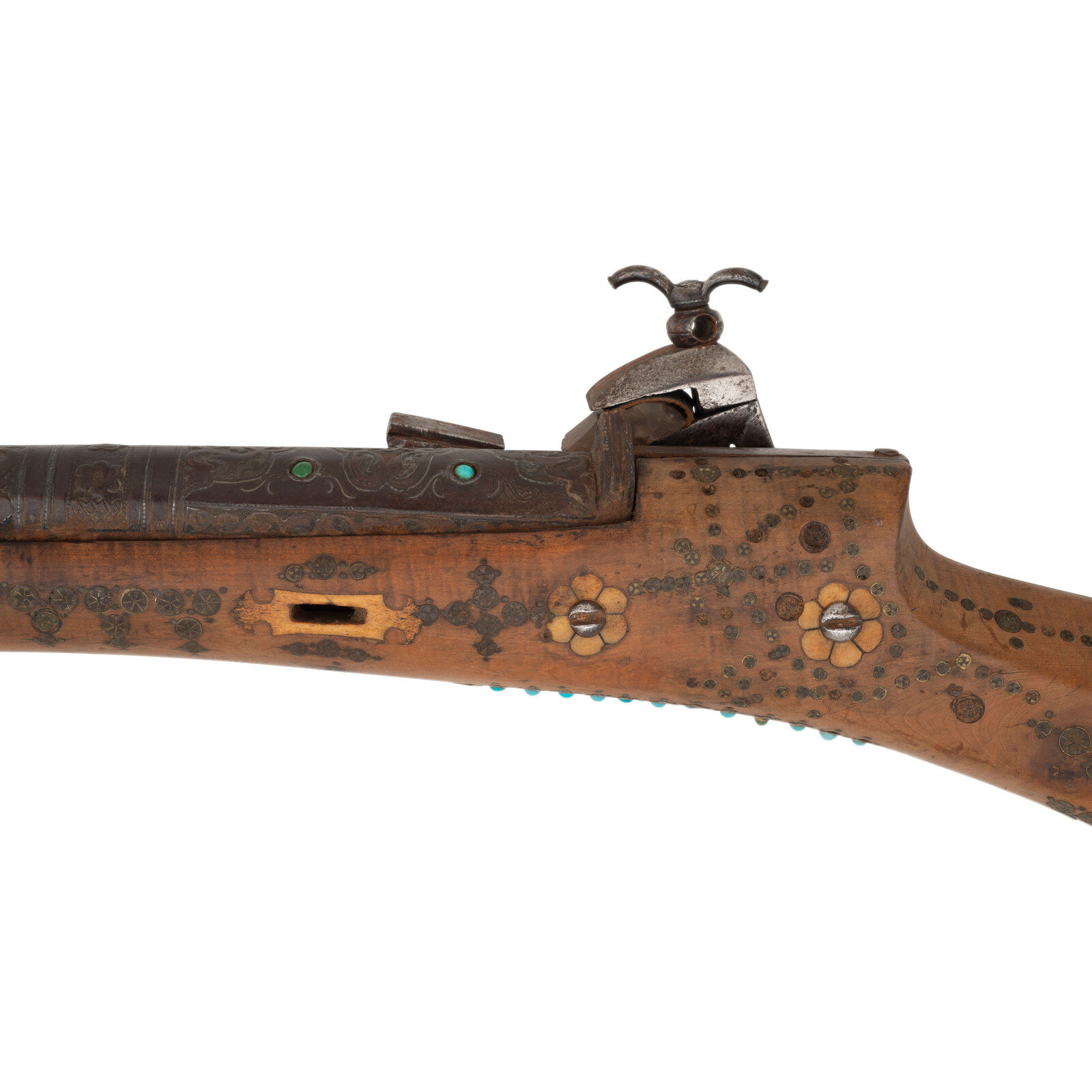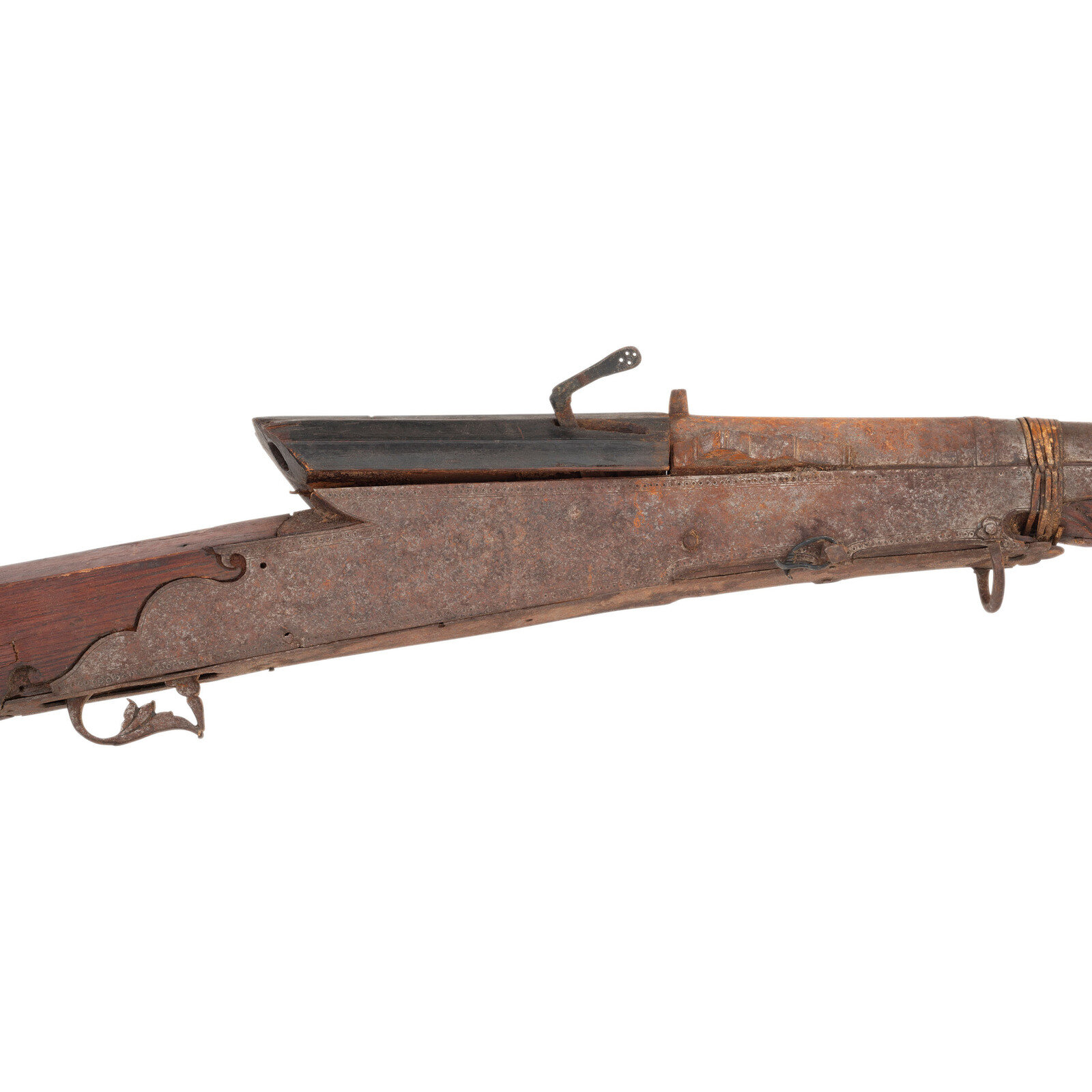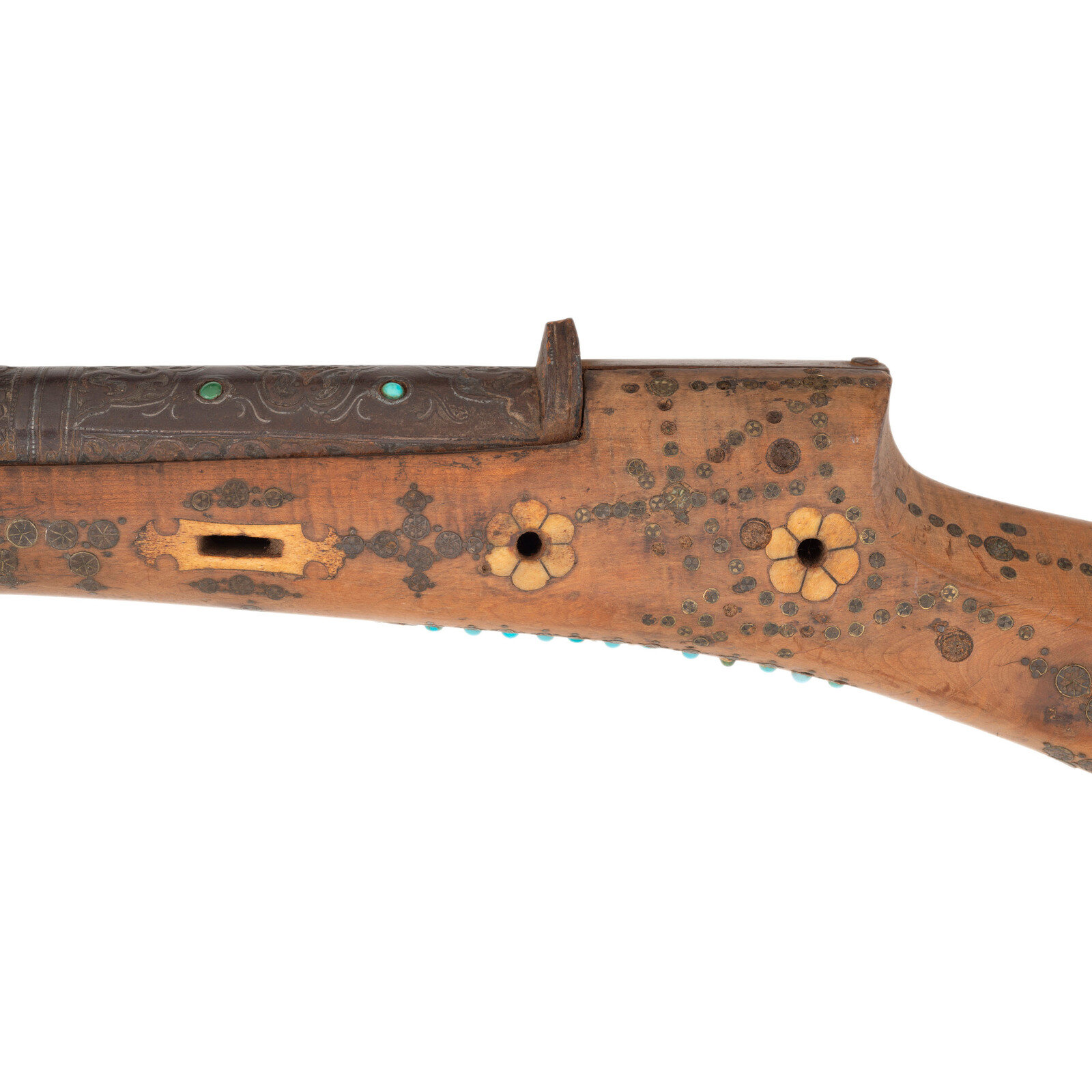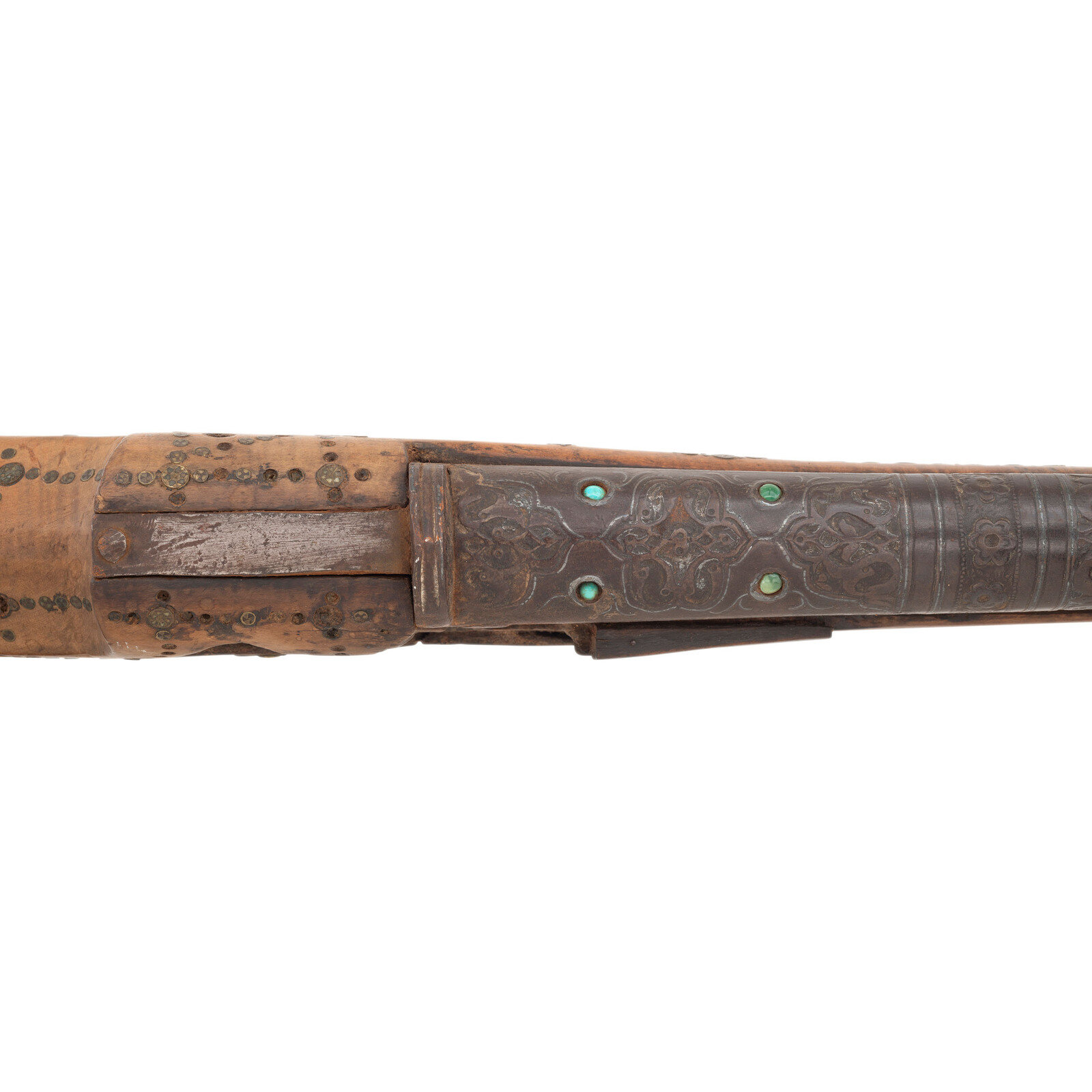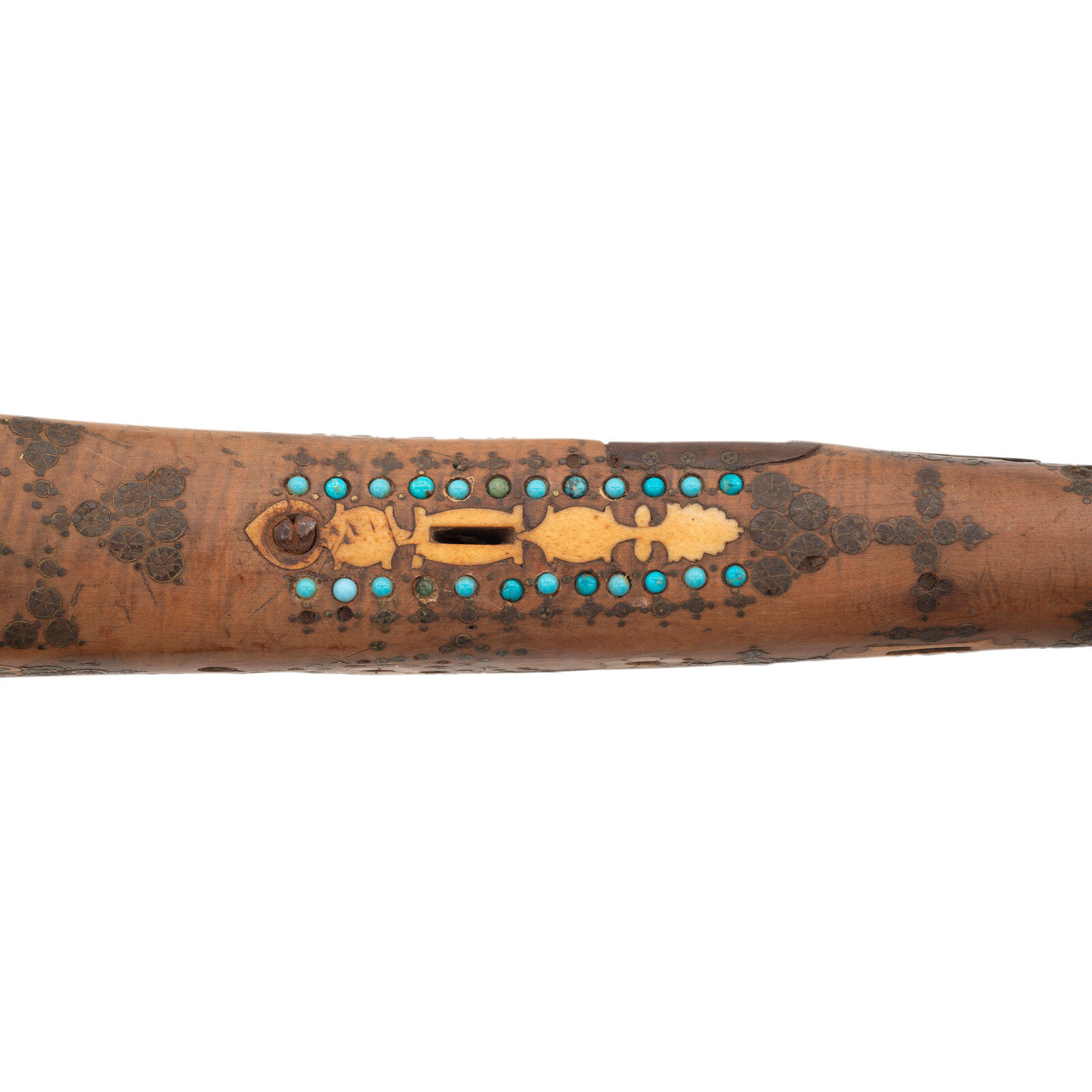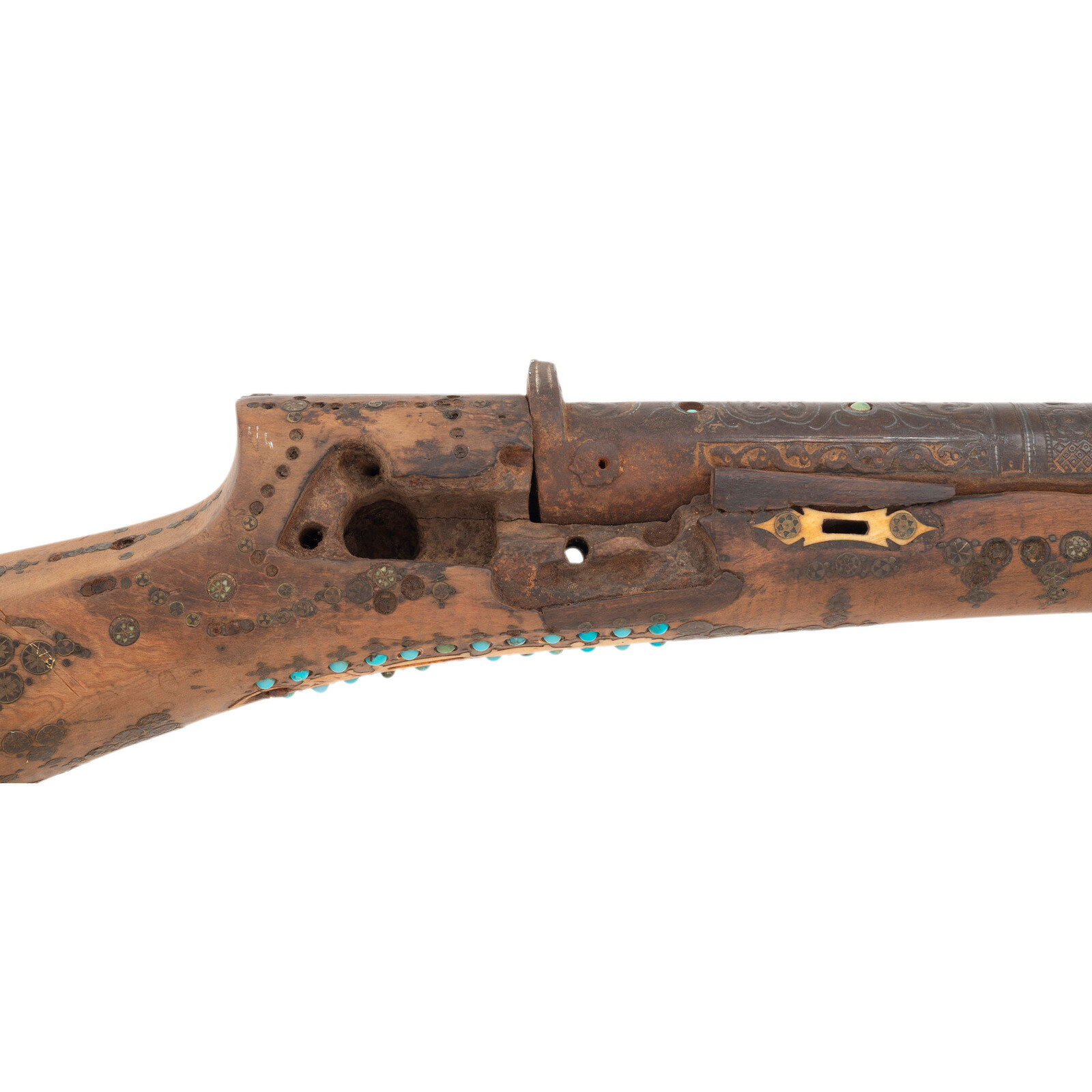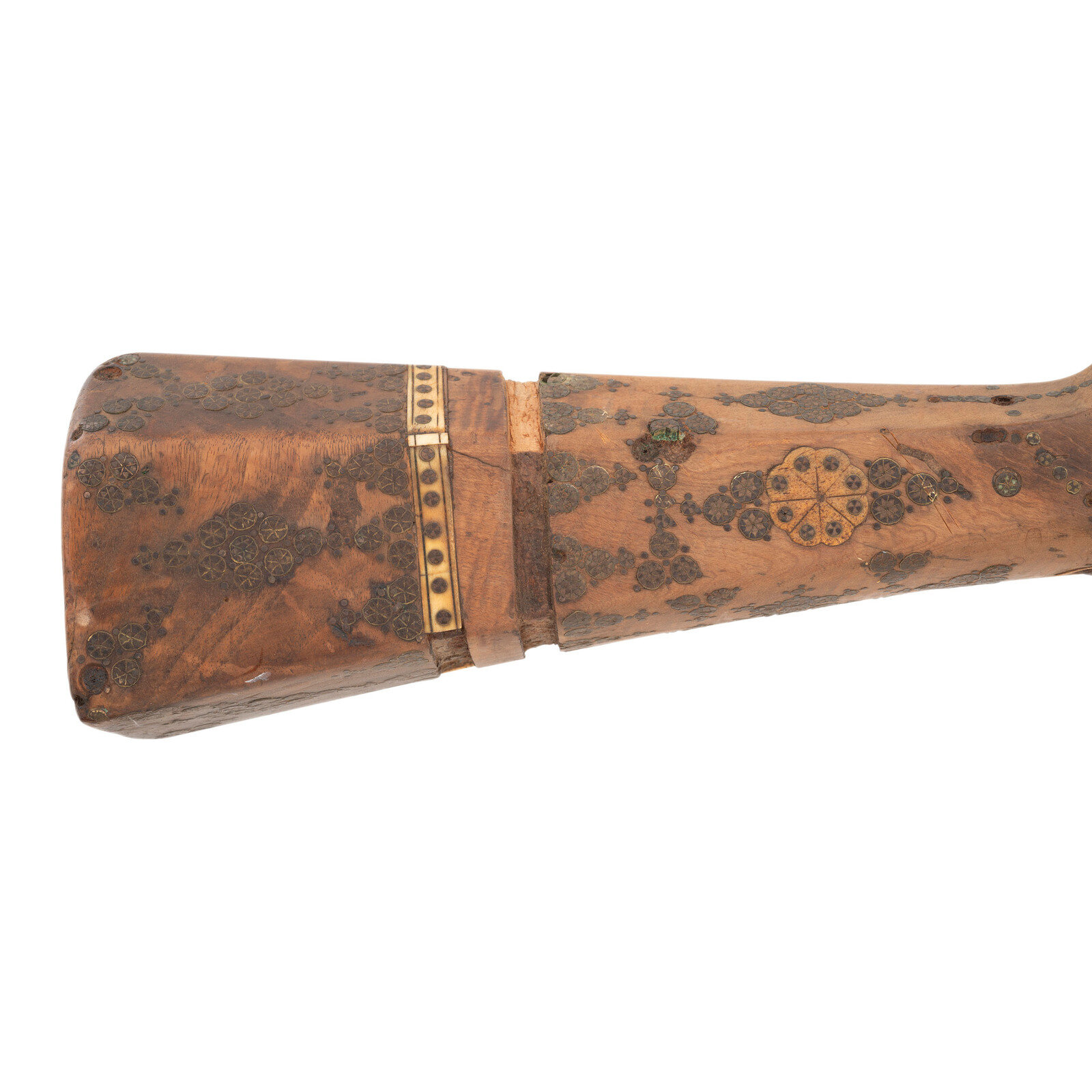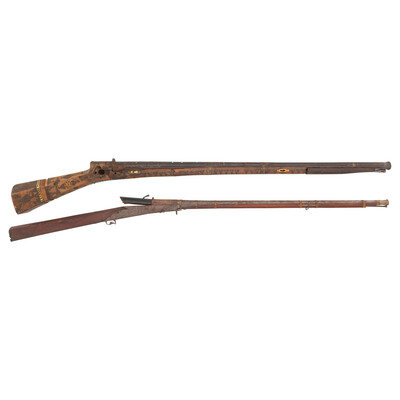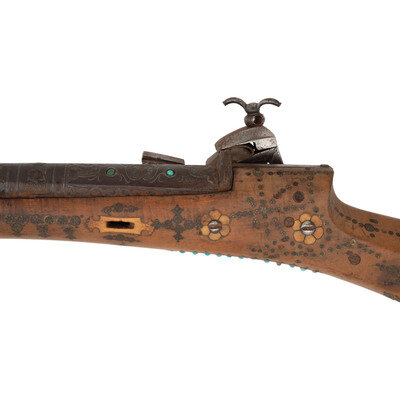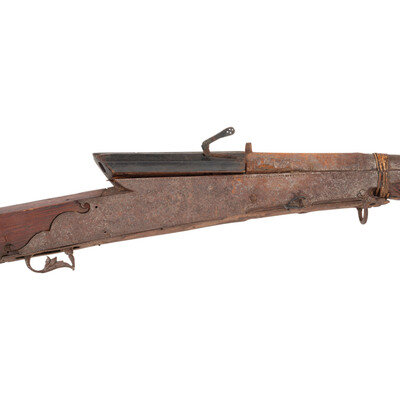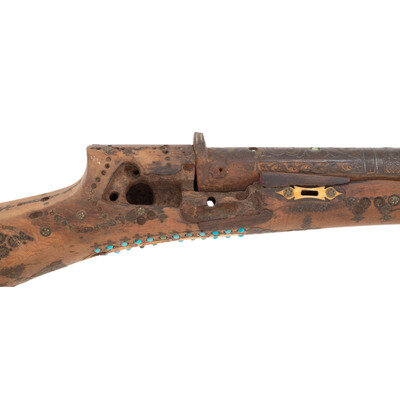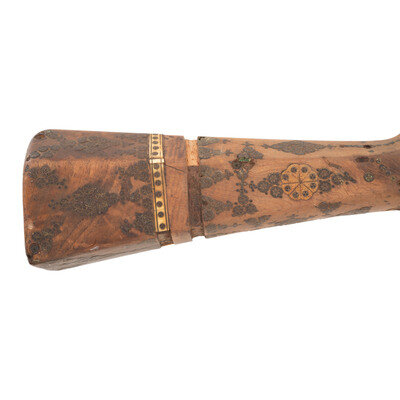Lot of 2 Ottoman and Indian Muskets Including: Heavily Inlaid Shishana and Toradar
Sale 2009 - Arms, Armor and Militaria Online
Lots Open
Jun 26, 2024
Lots Close
Jul 9, 2024
Timed Online / Cincinnati
Estimate
$400 -
$600
Lot Description
Lot of 2 Ottoman and Indian Muskets Including: Heavily Inlaid Shishana and Toradar
1.) Shishana - About .70 caliber flared muzzle. 36" barrel length. SN: NSN. Browned metal finish. Hardwood stock (most likely Turkish walnut) has a hexagonal butt and full length forend, with elaborate wire, ivory, turquoise, and coral inlay overall to both stock and barrel. Barrel is also chiseled with Arabesque motifs and has a gold band toward muzzle. Miquelet action musket with a primitive peep sight and dovetail cutout to muzzle. Lock is chiseled with floral motifs and has very strong spring. Item is missing components including trigger, barrel bands, stock pins, and many inlays.
2.) Toradar - About .46 caliber. 31.5" barrel length. SN: NSN. Bright or browned steel finish that is mostly bare and covered by oxidation. Hardwood stock with a straight hexagonal butt that has a carved horn buttplate, and forearm that is simple carvings forward of frame. Matchlock musket with fixed notch rear sight and bead front sight. Item features flared muzzle with gold accented engravings, wire barrel bands, and double sling loops. Barrel is engraved with what appears to be Indo-Persian text, and frame fittings have simple punch dot borderwork.
Toradar muskets are believed to have been used by the Mughal Empire from the early 16th century up until the mid to late 19th century. According to Gahir & Spencer's Visual History of Arms and Armor (2006), when the Portuguese reached India in 1498, they brought firearms with them including matchlocks. Expert native armorers were quickly able to copy the Portuguese firearms and began producing their own matchlock muskets incorporated with regional symbolism and motifs. These native muskets became known as the toradar, and were used widely because they were simple and cheap to make.
2.) Toradar - About .46 caliber. 31.5" barrel length. SN: NSN. Bright or browned steel finish that is mostly bare and covered by oxidation. Hardwood stock with a straight hexagonal butt that has a carved horn buttplate, and forearm that is simple carvings forward of frame. Matchlock musket with fixed notch rear sight and bead front sight. Item features flared muzzle with gold accented engravings, wire barrel bands, and double sling loops. Barrel is engraved with what appears to be Indo-Persian text, and frame fittings have simple punch dot borderwork.
Toradar muskets are believed to have been used by the Mughal Empire from the early 16th century up until the mid to late 19th century. According to Gahir & Spencer's Visual History of Arms and Armor (2006), when the Portuguese reached India in 1498, they brought firearms with them including matchlocks. Expert native armorers were quickly able to copy the Portuguese firearms and began producing their own matchlock muskets incorporated with regional symbolism and motifs. These native muskets became known as the toradar, and were used widely because they were simple and cheap to make.
This lot is located in Cincinnati.
Condition Report
1.) Poor to fair. Bore is dark. Finish has darkened overall, with scattered pitting and scratches. Stock has many missing inlays, losses to wood, and discoloration overall. Lock is functional, but item is missing trigger assembly.
2.) Fair. Bore is dark. Finish has scattered oxidation and scratching overall. Wood stock shows some scattered minor cracks around frame, scratches, and losses around metal fittings. Action appears to be functional.
2.) Fair. Bore is dark. Finish has scattered oxidation and scratching overall. Wood stock shows some scattered minor cracks around frame, scratches, and losses around metal fittings. Action appears to be functional.
The physical condition of lots in our auctions can vary due to
age, normal wear and tear, previous damage, and
restoration/repair. All lots are sold "AS IS," in the condition
they are in at the time of the auction, and we and the seller make
no representation or warranty and assume no liability of any kind
as to a lot's condition. Any reference to condition in a catalogue
description or a condition report shall not amount to a full
accounting of condition. Condition reports prepared by Hindman
staff are provided as a convenience and may be requested from the
Department prior to bidding.
The absence of a posted condition report on the Hindman website or
in our catalogues should not be interpreted as commentary on an
item's condition. Prospective buyers are responsible for
inspecting a lot or sending their agent or conservator to inspect
the lot on their behalf, and for ensuring that they have
requested, received and understood any condition report provided
by Hindman.
Please email armsarmor@hindmanauctions.com for any additional information or questions you may have regarding this lot.
